History
The first church was built in Northgate in 1873 and designed by the architects Evans and Jolly of Nottingham. [1] It cost £4,000 and was consecrated by Christopher Wordsworth, Bishop of Lincoln on 28 January 1873. The reredos was by A.H. Skipworth, and was in the form of a triptych with alabaster figures, depicting the crucifixion and the annunciation. [2]
The organist in 1899–1903 was William Thompson Wright, who was afterwards organist of Church of St. Mary Magdalene, Newark-on-Trent.
A new church was built to replace the old in 1978, in Lincoln Road. It was designed by the architect Gordon Smith and dedicated by the Bishop of Southwell on 5 November 1978. The fittings of the old church were sold, and the reredos was acquired by Our Lady and St Benedict's Catholic Church, Wootton Wawen. [3]
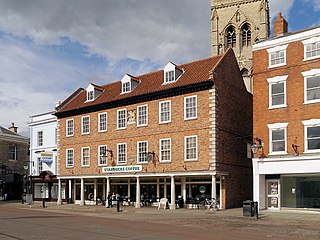
Newark-on-Trent or Newark is a market town and civil parish in the Newark and Sherwood district in Nottinghamshire, England. It is on the River Trent, and was historically a major inland port. The A1 road bypasses the town on the line of the ancient Great North Road. The town's origins are likely to be Roman, as it lies on a major Roman road, the Fosse Way. It grew up round Newark Castle, St Mary Magdalene church and later developed as a centre for the wool and cloth trades.

The Cathedral Church of St. Barnabas is a cathedral of the Roman Catholic Church in the city of Nottingham in Nottinghamshire, England. It is the mother church of the Diocese of Nottingham and seat of the Bishop of Nottingham. The cathedral is a grade-II* listed building.

Nottinghamshire is a county that is situated in the East Midlands of England. The county has history within the Palaeolithic period, dating anywhere between 500,000 and 10,000 BCE, as well as early Anglo-Saxon communities, dating to 600 CE. Furthermore, the county has significance in the political aspects of English history, particularly within intercommunal fighting, and its economics is historically centred around coal and textiles.

Southwell is a minster and market town, and a civil parish, in the district of Newark and Sherwood in Nottinghamshire, England. It is home to the grade-I listed Southwell Minster, the cathedral of the Anglican Diocese of Southwell and Nottingham. The population of the town was recorded at 7,491 in the 2021 census.

Burton Joyce is a large village and civil parish in the Gedling district of Nottinghamshire, England, 7 miles (11 km) east of Nottingham, between Stoke Bardolph to the south and Bulcote to the north-east. The A612 links it to Carlton and Netherfield to the south-west and Lowdham to the north-east. Initially the site of an Iron age fort, it was occupied by Norman nobility, who founded St Helen's Church. From being a farming community, Burton Joyce grew in the early Industrial Revolution, earning repute up to the 1920s for its textile products. Many of its 3,500 inhabitants commute to work in Nottingham. It forms with Stoke Bardoph and Bulcote the Trent Valley ward of Gedling, with two councillors.

Rolleston is a small village and civil parish in Nottinghamshire by the River Greet, a few miles from Southwell not far from the Trent and about 5 miles (8.0 km) southwest of Newark. The population of the civil parish at the 2011 census was 312, increasing to 342 at the 2021 census. It has a church dedicated to the Holy Trinity. It lies close to the railway line between Nottingham and Lincoln with a station serving the village and Southwell as well as the nearby Southwell Racecourse.

Halloughton is a hamlet and civil parish in Nottinghamshire, England, 9 miles west of Newark-on-Trent. It lies in the district of Newark and Sherwood. Most of the property there was owned by the Church Commissioners until 1952. The resident population of the parish was 65 at the 2021 census.
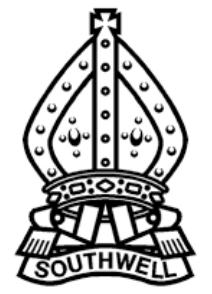
The Minster School is a Church of England secondary school with sixth form in Southwell, Nottinghamshire, England, for children aged 11 to 18. There are approximately 1600 students on roll. It has a small selective junior section for boy and girl choristers from Southwell Minster and other pupils chosen for their musical ability. It has a smaller than average proportion of pupils on free school meals, or of ethnic minority origin or with Statement of Special Educational Needs.
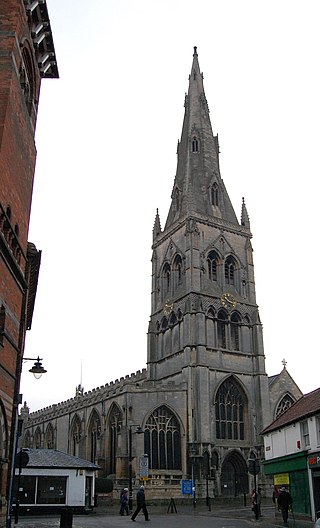
St Mary Magdalene Church, Newark-on-Trent is the parish church of Newark-on-Trent in Nottinghamshire, England. It is dedicated to Mary Magdalene and is the tallest structure in the town.
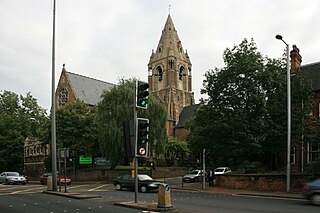
St. Andrew's Church Nottingham is a parish church in the Church of England.

Holy Trinity Church, Lenton is a parish church in the Church of England Diocese of Southwell, located in Lenton, Nottingham.

Christ Church, Newark is a parish church in the Church of England in Newark-on-Trent, Nottinghamshire.
St. Paul's Church, George Street, was a Church of England church built as a chapel of ease to St. Mary's Church, Nottingham. It was opened in 1822 and closed in 1924.
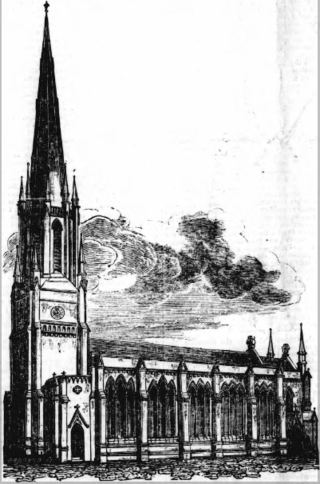
Holy Trinity Church, Nottingham was a Church of England church in Nottingham from 1841 to 1958.
Emmanuel Church, Nottingham was a Church of England church in Nottingham on Woodborough Road between 1883 and 1972.
St. Thomas' Church, Nottingham was a Church of England church on Park Row in Nottingham between 1873 and 1926.
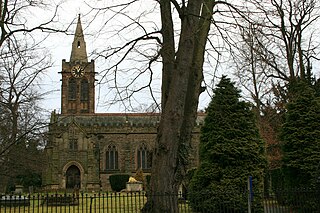
St. Peter's Church is a Church of England church in Ruddington, Nottinghamshire.

St Swithun's Church is a Grade II* listed Church of England parish in the Diocese of Southwell and Nottingham in East Retford, Nottinghamshire, England.

All Saints' Church, Winthorpe is a Grade II listed parish church in the Church of England in Winthorpe, Nottinghamshire, England. The current building, the construction of which was completed in 1888, is at least the third version of the church, which dates back to at least the early 13th century. All Saints' Church was commissioned by the church rector, Edward Handley, in memory of one of his relatives.
Arthur Henry Skipworth was an English architect, who mostly designed church fittings as well as some churches.

















